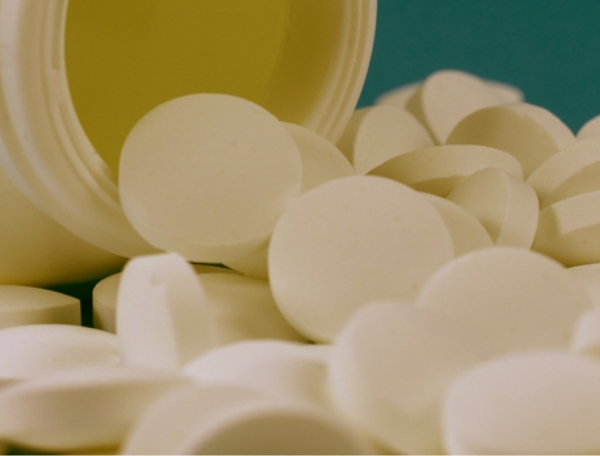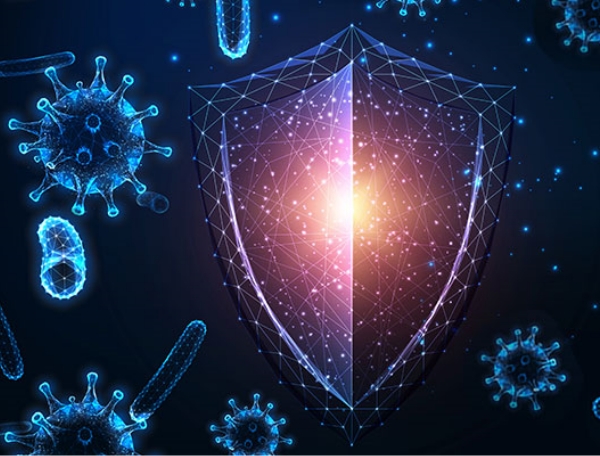


Clinical Research
Plasma Therapy Proves Transformative
First to offer clinical trial and publish a study, Houston Methodist sees happy outcome for COVID-19 patient

The convalescent plasma therapy protocol was developed by Houston Methodist physician scientists from the Department of Pathology & Genomic Medicine.
Love and research aren’t typically entwined. But for this COVID-19 patient, research showed him he was loved. And it probably saved his life.
Phil Towse, a 68-year old resident of Katy, entered Houston Methodist West on May 3. What began as light-headedness on April 24 had turned into a case of double pneumonia in both lungs brought on by COVID-19. Seeing the severity of his condition, the Houston Methodist doctors informed Towse and his family about a clinical trial for convalescent plasma therapy.
Convalescent plasma therapy takes plasma from an individual recovered from COVID-19 and transfuses it into a COVID-19 patient who is still fighting the virus. The healthy plasma contains antibodies made by the recovered patient’s immune system. When administered, the antibody-rich plasma helps transform the ill patient’s antibodies into a healing, life-saving therapy.
“My oxygen levels were so low, I was having problems concentrating,” Towse said. “I couldn’t make a decision about the plasma.”
In no condition to make a decision, Towse left the decision to his wife, daughter, son and nephew, who works in the research facilities at Houston Methodist. They quickly learned that convalescent plasma therapy offered one of the few treatments available for COVID-19 patients.

Phil Towse with his wife, Cathye Jo, who explored treatment options when he entered the hospital with COVID-19 in May.
In fact, the family realized they were fortunate to be at Houston Methodist—the only hospital in Texas and the first in the nation—to treat patients with convalescent plasma therapy, also called convalescent serum therapy. On March 28, Houston Methodist had become the first academic medical center in the U.S. to receive FDA approval to provide the treatment. It was classified as an emergency investigational new drug protocol (eIND), which requires FDA approval for each patient infused with donated convalescent serum.
At 3 a.m. on May 4, Towse was given the plasma therapy transfusion.
“I was so out of it, I didn’t feel a thing,” Towse said. “I felt no pain.”
On May 6, Towse began his birthday by looking out his hospital room window to see his family, including his grandchildren, cheering him with birthday posters and balloons. He was feeling good, and to make the day better, he was able to go home. But the next morning his oxygen level dropped below 85%, when it should have been 95% or better. Towse’s wife, Cathye Jo, drove him back to the hospital.
Houston Methodist pulmonologists started Towse on I.V. steroid treatments for several days, which continued after he was transported on May 9 from Methodist West to Methodist's Continuing Care Hospital COVID unit, designated to provide specialized care of COVID-19 patients in response to the crisis.
It was touch and go at one point. I was blessed to have such a caring group taking care of me, they stayed on top of things and always had a positive attitude, and even joked around.

Phil Towse
Houston Methodist Patient
The convalescent plasma therapy protocol was developed by Houston Methodist physician scientists from the Department of Pathology & Genomic Medicine Eric Salazar, MD, PhD, assistant professor, and James M. Musser, MD, PhD, Fondren Foundation Distinguished Presidential Endowed Chair.
The study results—the first in the U.S. to be published—were posted in The American Journal of Pathology on May 26. They showed that 19 out of 25 patients improved with the convalescent serum therapy. The research team continues to track results as part of a nationwide multi-center clinical trial. (Read our article on COVID-19 Plasma Therapy here).
After a total of 11 days in the hospital, Towse returned home May 13. He spent two weeks in quarantine, which included breathing exercises for his lungs and physical exercises to gain strength. He also took three more COVID tests before finally receiving the celebratory "not detected" result May 29.
He was able to return to work on June 8.
“Life is good, life is sweet,” Towse said. “I’m grateful for my family seeking the best medical care for me, and the decision to receive the blood plasma...this experience brought us closer. I feel loved.”
Towse also is grateful for the antibodies he received, and is exploring the possibility of donating. Plasma donations must come from recovered COVID-19 patient who have tested negative repeatedly and have been in good health for more than two weeks—after waiting the 90 days required before donating.
“Once you’re sitting at death’s door and recover, you think about giving back,” he said. If Towse donates, he will be the first recovered Houston Methodist patient to donate back to the hospital.

Phil Towse appreciated the support of his nephew (left) and two children who assisted his wife, Cathye Jo, when she was making decisions regarding his treatment.
Phil's story also was featured on NBC affiliate, KPRC-Channel 2 on August 20. Click here to see it now.
Salazar E, Perez KK, Ashraf M, Chen J, Castillo B, Christensen PC, Eubank T, Bernard DW, Eagar T, Long SW, Subedi S, Olsen RJ, Leveque C, Schwartz MR, Dey M, Chavez-East C, Rogers J, Shehabeldin A, Joseph D, Williams G, Thomas K, Masud F, Talley C, Dlouhy KG, Lopez B, Hampton C, Lavinder J, Gollihar JD, Maranhao AC, Ippolito GC, Saavedra MO, Cantu CC, Yerramilli P, Pruitt L and Musser JM. Treatment of COVID-19 patients with convalescent plasma in Houston, Texas. medRxiv. May 13, 2020. DOI: 10.1016/j.ajpath.2020.05.014.
This study was supported by funding from the National Institutes of Health (grants AI146771-01 and AI139369-01), the Fondren Foundation, the National Institute of Allergy and Infectious Diseases (Contract Number 75N93019C00050), the Army Research Office (Cooperative Agreement W911NF-12-1-0390), Houston Methodist Hospital and Houston Methodist Research Institute.
LaVonne Carlson, July 2020








